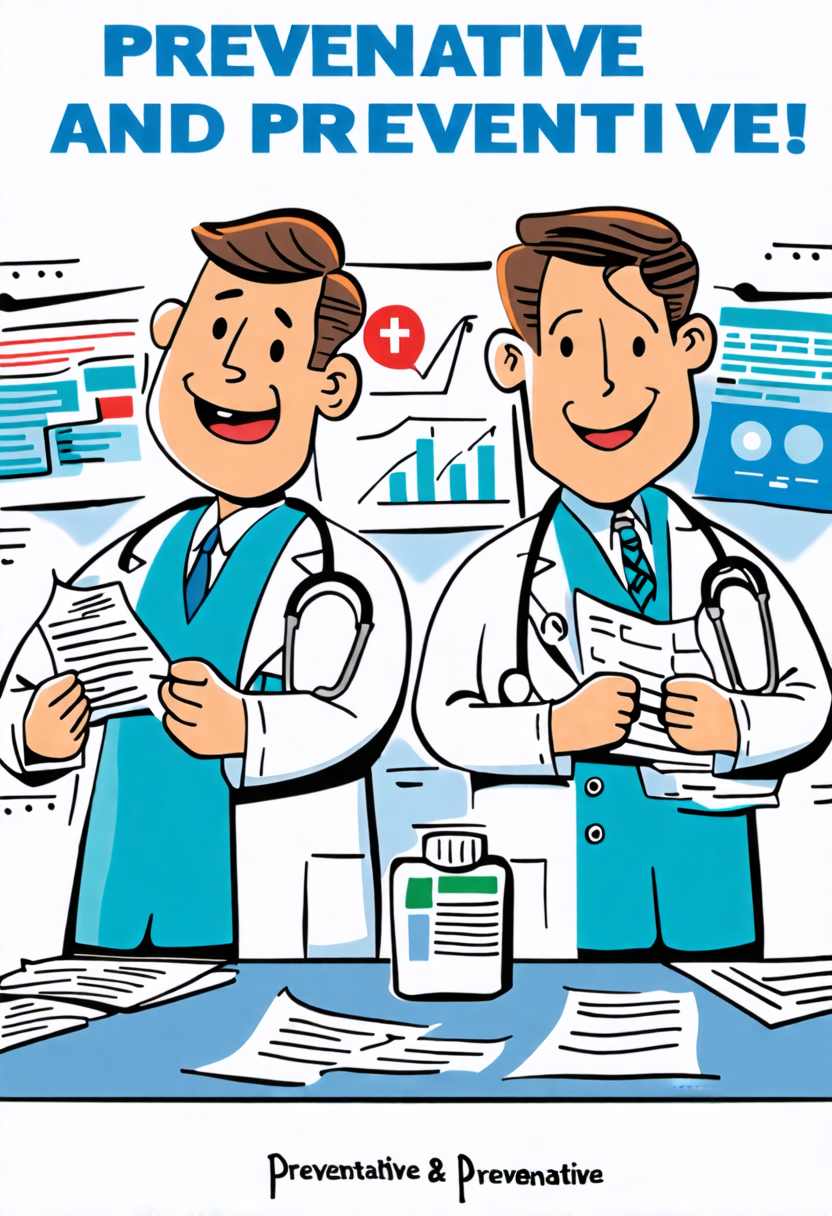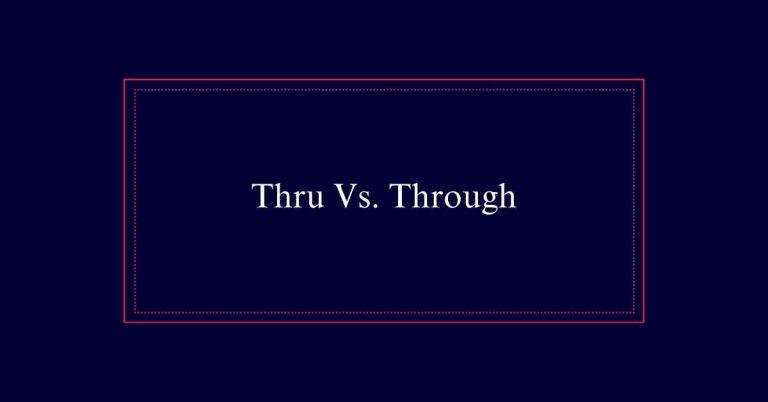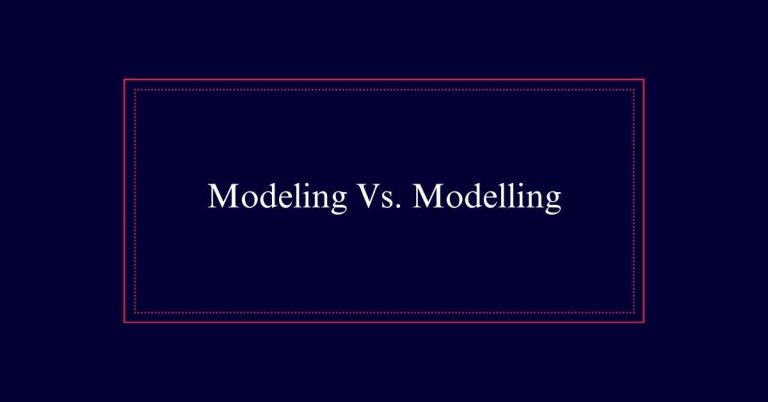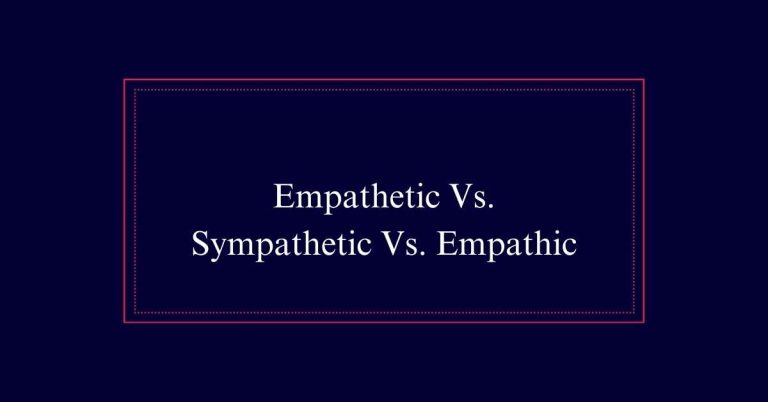Preventative and Preventive
The terms ‘preventive’ and ‘preventative’ are essentially synonymous and used interchangeably. Both refer to actions aimed at stopping harmful outcomes, especially in health contexts, such as vaccinations and lifestyle counseling. ‘Preventive’ is more commonly used and aligns with editorial standards in professional writing.
Understanding Preventive
Understanding preventive involves examining its role in stopping harmful outcomes, particularly in medical contexts. Preventive measures are actions taken to avoid diseases and health issues before they occur.
This term often refers to medical interventions such as vaccines, screenings, and lifestyle changes designed to reduce risk factors. For example, vaccines are a form of preventive medicine that protect against infectious diseases. As a noun, preventive can also signify any tool or measure that prevents harm, such as safety equipment or policies.
The Role of Preventive
Preventive measures play a key role in healthcare by targeting potential health threats before they manifest into serious conditions. These measures include vaccinations, screenings, and lifestyle counseling.
Vaccinations help build immunity against infectious diseases. Screenings can detect early signs of illnesses like cancer, allowing for timely intervention. Lifestyle counseling promotes healthy habits to prevent chronic diseases such as diabetes and heart disease.
By implementing these strategies, healthcare systems can reduce the incidence of severe health issues. This not only improves patient outcomes but also reduces healthcare costs.
What Is Preventative?
Preventative measures are actions designed to stop harmful outcomes before they occur. The term ‘preventative’ is synonymous with ‘preventive’ and refers to actions or interventions intended to prevent something undesirable. This can include medical practices such as vaccinations, regular health screenings, and lifestyle changes aimed at reducing disease risk.
Beyond healthcare, preventative actions can also apply to areas like safety protocols, environmental conservation, and even financial planning. For instance, installing smoke detectors is a vital measure in fire safety. Though ‘preventative’ and ‘preventive’ are used interchangeably, ‘preventive’ is more commonly preferred in American English.
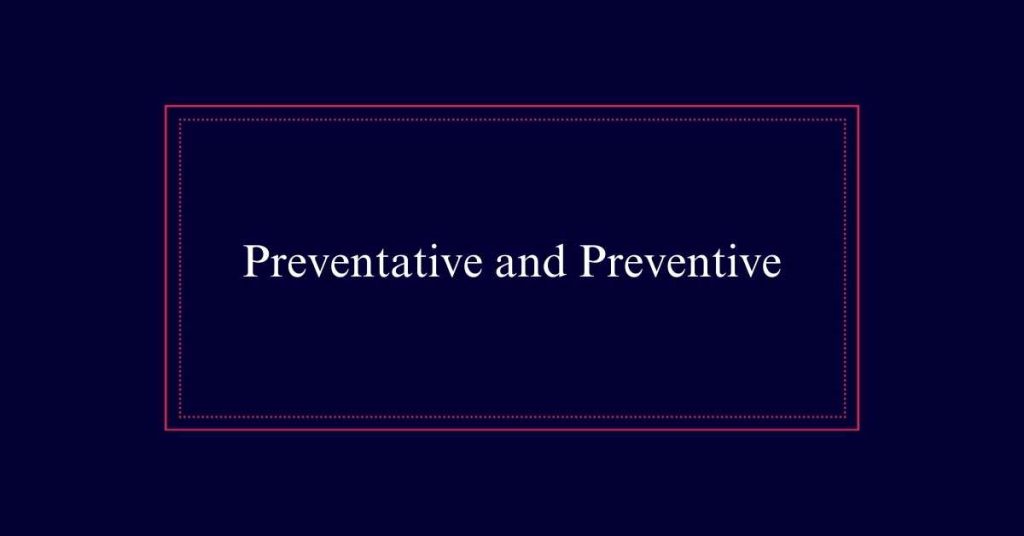
Preventive as a Noun
Apart from its role as an adjective, ‘preventive’ is also used as a noun to denote something that averts harm or negative outcomes.
As a noun, it refers to any measure or action designed to stop problems before they occur. Common examples include safety devices, protective gear, or even policies and procedures that minimize risks.
The use of ‘preventive’ in this particular situation highlights its importance in various fields, from public health to everyday life. For instance, wearing seat belts in cars is a preventive aimed at reducing injury during accidents.
Medical Contexts
Medical contexts often highlight the critical role of measures designed to inhibit disease and maintain health. Both ‘preventive’ and ‘preventative’ are used interchangeably in medical literature to describe actions aimed at preventing illness. These terms encompass a variety of strategies and interventions.
- Vaccinations: Immunizations are preventive measures that protect against diseases like influenza and measles.
- Screenings: Regular health screenings, such as mammograms and colonoscopies, help detect early signs of cancer.
- Lifestyle Changes: Adopting healthy habits, like regular exercise and a balanced diet, are preventive actions to reduce the risk of chronic diseases.
- Medications: Preventive medications, such as blood pressure drugs, help manage and prevent conditions like hypertension.
Non-Medical Uses
Preventive and preventative measures are also applied in various non-medical contexts to avert undesirable outcomes. For example, in the financial sector, preventive strategies include risk assessments and hazard controls to avoid losses.
In environmental management, both terms describe actions like pollution control to prevent ecological damage. In cybersecurity, preventative measures encompass firewalls and encryption to guard against data breaches.
Education systems use preventive actions such as anti-bullying programs to guarantee student safety. Both terms are interchangeable in these contexts, focusing on actions taken to stop issues before they arise.
Historical Origins
Historically, both ‘preventive’ and ‘preventative’ emerged in the English language around the mid-17th century. Their origins coincide with advancements in medical science and public health, necessitating terms to describe actions and measures aimed at preventing diseases and other adverse conditions.
Here are some key points about their historical origins:
- First Recorded Use: ‘Preventive’ appeared around 1635, with ‘preventative’ following shortly after.
- Etymology: Both words derive from the Latin ‘praeventivus,’ meaning ‘to anticipate or hinder.’
- Suffix Variation: ‘Preventive’ uses the -ive suffix, while ‘preventative’ includes an extra -at-.
- Literary Usage: Early literature shows both terms used interchangeably, reflecting their synonymous meanings.
Usage Trends
In examining usage trends, it is evident that ‘preventive’ is more commonly used than ‘preventative’ in American English. This preference is reflected in various style guides and professional writing.
For instance, The New York Times and the AP Stylebook recommend using ‘preventive.’ Additionally, data from tools like Google Ngram Viewer show ‘preventive’ being favored more frequently over the years.
Despite their interchangeable meanings, ‘preventive’ is often preferred in medical and professional contexts. ‘Preventative’ is still correct but less frequent. This trend highlights a subtle but clear distinction in usage patterns, emphasizing the dominance of ‘preventive’ in American English while both terms remain valid and understood.
Regional Preferences
Across different regions, there are noticeable preferences for using either ‘preventive’ or ‘preventative.’ While both terms are understood universally, their usage varies:
American English: Prefers ‘preventive’ and uses ‘preventative’ rarely.
British English: Shows a slight preference for ‘preventative’ over ‘preventive.’
Style Guides: Many American style guides, like The New York Times and AP Stylebook, recommend ‘preventive.’
Global Context: Both terms are accepted and understood globally, though ‘preventive’ is more common.
Style Guide Advice
Many style guides recommend using ‘preventive’ over ‘preventative’ for consistency. The New York Times and the AP Stylebook both advocate for ‘preventive’. This choice is driven by simplicity and uniformity in writing. While both terms are correct and interchangeable, ‘preventive’ is more commonly used in American English.
Using ‘preventive’ aligns with the majority of style guides and guarantees clarity. It avoids confusion that may arise from using two different spellings. Writers are encouraged to follow this guideline to maintain a professional and standardized approach.
